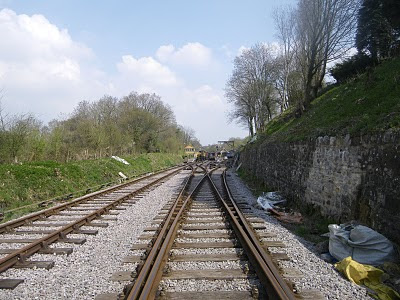(All pics copyright 15.5.1977 Rail Thing/Steve Sainsbury)
Back in the sixties this place always fascinated me. We used to go over it in the car on the way to London visiting relatives. Every time it looked more and more derelict. I even got involved with a preservation attempt for the route in the 70s.
It was the first station out from Pulborough on the Pulborough-Midhurst line, which closed to passengers in 1955, lingering on in part for freight until May 1966.
Back in the seventies it was possible to wander around the station and line but eventually it was sold and turned into a house. Of course in the future the line is almost certain to be restored as it serves the small towns of Petworth and Midhurst and would provide an excellent link to London.
At one time Midhurst had three routes, the others being the branch to Petersfield, on the London to Portsmouth main line, and the wonderful line through the Downs southwards to Chichester, which closed as long ago as 1935 to passengers. The only direction trains didn't travel in was northwards, and a line through Fernhurst to Liphook or Haslemere will provide a very useful commuter route in the future.
FITTLEWORTH RAILWAY STATION
Fittleworth railway station was on the LBSCR, London, Brighton and South Coast, line between Pulborough and Midhurst which opened in 1859.
For some 30 years there was no station at Fittleworth. After numerous complaints, a small station opened in September 1889.
After nearly 66 years of service it finally closed to passengers in February 1955. Freight traffic from Fittleworth continued until 1963 three years before the lines total closure in 1966. The small station building remained undeveloped for many years. However it was restored and converted into a private dwelling in 1987.
more on the local lines here
timeline -
1859 line opened
Sep. 1889 Station opened
Feb.1955 Station closed to passengers
May 1963 Station closed for freight
1966 line closed









































